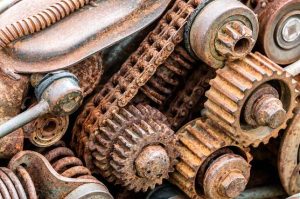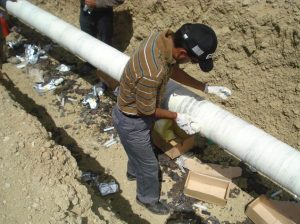When a metal is exposed to natural electrolytes like water, salt, and oxygen it corrodes. Metals like carbon and stainless steel have the highest ability to corrode.
When corrosion occurs, the metal weakens and becomes more vulnerable to damage. Because most items are made of steel, it is important to protect your property at all times. The corrosion- resistant coating is one of the best ways to protect metals from corrosion.
It also helps to prolong the lifespan of the metal along with reducing maintenance and replacements costs. However, before you opt for a particular coating for corrosion, it is important to recognize the kind of corrosion to which a part is disposed to. That said, here are some of the types of corrosion and the coatings available.
Types of corrosion
- Galvanic
This type of corrosion occurs when two metals with unlike electrochemical charges link through a conductive path or when one impure metal exists. Applying a coating on the surface of the metal can help prevent the transfer of ions from the anodic metal to the cathodic metal. It can also inhibit the conditions that cause the transfer.
- Stress-corrosion cracking (SCC)
When a metal is exposed to extreme conditions like cold work, thermal treatment, or welding it experiences SCC along the grain boundary. This extreme tensile stress can damage the component beyond repair, especially when combined with exposure to moisture, salts, or oxygen. When SCC occurs in steel it's dubbed as "caustic embrittlement", in brass it is known as "season cracking".
- General
When steel is exposed to water or moisture, oxidation occurs resulting in a thin layer of rust. General corrosion is almost similar to galvanic since they are both electrochemical. Applying a preventative coating on the surface of the metal may interfere with the reaction.
- Localized
This type of corrosion occurs when a small section of a metal experiences rust or is exposed to certain corrosion-causing stresses. The small local area is most likely to corrode much faster than the rest of the metal. The end results might be much worse since the corrosion is also affected by other processes like fatigue and stress. See more here https://www.thoughtco.com/types-of- corrosion-2340005
- Types of metal coatings and their benefits
Now that you know the various types of corrosions here are ways you can protect your metal from damage.
- Galvanizing
Galvanizing also known as zinc coating involves the deposition of molten zinc baths on the surface of the metal. The coated metal reacts with Co2 and oxygen in the air to form a zinc carbonate coating. The galvanizing process is popular for its many applications since zinc oxide coating is long-lasting and doesn't break easily. One popular application of zinc coating is in the sheet metal fabrication industry.
- Electroplating
Electroplating is another important method used to prevent metal corrosion. Here, the affected metal is coated with a thin layer of another metal to create a protective layer.
During the process, both metals are immersed in an electrolytic solution, an electric current is then applied, forcing the metal ions in the electrolytic cell to move. Electroplating tends to improve the majority of the metals’ mechanical properties and creates a beautiful surface finish.
- Paint Coating
This is one of the easiest methods of protecting metals from rust. It involves the application of liquid paint onto the surface of the meat. Paint coating is also relatively cheap and easily accessible. You can choose any paint formulation of your liking depending on the type of metal, the performance requirements, and the operating environment.
- Powder Coating
Powder coating is an electrostatic process that involves the application of powdered substances on the surface of a metal.
The powdered particles have an electrical charge that is opposite to that of the metal to be coated. Since unlike charges attract, the powdered particles are forced to adhere firmly onto the surface of the metal. Powder-coated objects are famous for their aesthetic appeal and durability.
- Anodizing
Anodizing involves the creation of a protective oxide layer on the surface of the metal. This protective layer tends to be thicker than that which occurs naturally. While this method can be used on most non-ferrous metals, aluminum tends to be more responsive.
Usually, this process involves the passing of electrical current through an aluminum component dipped in an electrolytic solution, triggering the formation of the protective barrier. Anodized surfaces are easy to maintain and clean. Click here to read more.
- Conclusion
Research shows that most businesses in the world today lose billions of dollars yearly due to corrosion. Proper metal coating can help reduce such risks and increase the lifespan of many metal assets. However, it is important to understand that there is no one-size-fits coating for all metals. A coating that works for a certain kind of corrosion may not work for another. Therefore, it is essential to understand the various types of corrosion as well.


